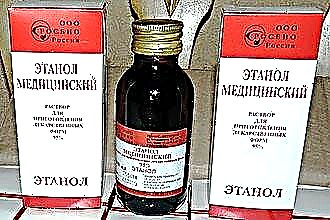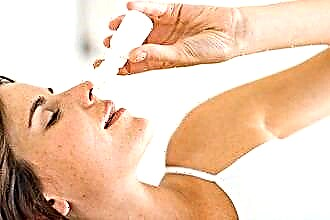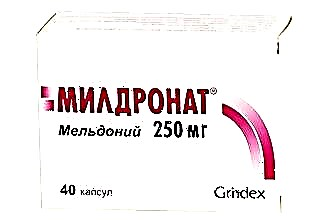A cough compress is an effective local agent that helps to eliminate inflammatory processes in the mucous membranes of the ENT organs. Physiotherapy is one of the components of conservative therapy for pharyngitis, laryngitis, bronchitis, pneumonia, tonsillitis and other infectious diseases. Intensive heating of the airways activates the work of the ciliated epithelium, as a result of which the secretory function of the glands is normalized. Reducing the viscosity of mucus and its evacuation from the lower respiratory tract helps to restore the drainage function of the bronchi.
 Therapeutic warming bandages are applied to the neck, chest and back. The thermal effect of the components of the warming agents leads to a reflex expansion of the blood capillaries. In the inflamed tissues, blood circulation and lymph outflow is accelerated, as a result of which swelling in the mucous membranes of the throat and bronchi decreases. Restoring the integrity of the ciliated epithelium prevents irritation of the cough receptors, thereby eliminating a dry and unproductive cough.
Therapeutic warming bandages are applied to the neck, chest and back. The thermal effect of the components of the warming agents leads to a reflex expansion of the blood capillaries. In the inflamed tissues, blood circulation and lymph outflow is accelerated, as a result of which swelling in the mucous membranes of the throat and bronchi decreases. Restoring the integrity of the ciliated epithelium prevents irritation of the cough receptors, thereby eliminating a dry and unproductive cough.
The principle of the compress
Can cough compresses be used? Compresses are called multilayer cotton-gauze dressings, which are impregnated with drugs or warming agents. They are applied to the site of the alleged inflammation of deep-lying tissues in order to resorb infiltrates in the mucous membranes of the ENT organs.
Local treatment of infectious diseases promotes blood flow to the lesion, as a result of which swelling in the tissues decreases. An increase in temperature in certain areas of the body stimulates the synthesis of antibodies in the body, which leads to an increase in local immunity.
T-lymphocytes, phagocytes and neutrophils quickly capture and destroy pathogens in the foci of inflammation, as a result of which the pathogenic flora is eliminated.
Heating the tissues of the ciliated epithelium stimulates the activity of the glands that secrete a viscous secret. A significant decrease in the viscosity of mucus accelerates the process of its evacuation from the lower airways. Timely cleansing of the respiratory system from pathological secretions helps to suppress the cough reaction and prevents the occurrence of pulmonary obstruction.
Late treatment of infectious and inflammatory processes in the ENT organs can cause obstruction of the respiratory tract.
Varieties of compresses
 What compresses will be effective for coughs? Therapeutic cotton-gauze dressings are classified into dry and wet, which are subdivided into cold, hot and warming.
What compresses will be effective for coughs? Therapeutic cotton-gauze dressings are classified into dry and wet, which are subdivided into cold, hot and warming.
To eliminate the cough syndrome, warming wet applications are often used, containing components of mucolytic, anti-inflammatory and anti-edema action.
By the type of base, warming compresses are:
- alcohol;
- mustard;
- oil;
- saline;
- herbal;
- vegetable.
The main advantage of local therapy for ENT diseases is the virtual absence of side reactions. In the case of proper preparation and application of a medical bandage, a dry cough quickly turns into a productive one. Thus, the evacuation of viscous secretions from the respiratory system is accelerated, which contributes to the normal ventilation of the lungs.
Medicinal properties
A dry, hacking cough irritates the mucous membranes of the throat and can lead to mechanical damage. Wet medicated dressings reduce the viscosity of mucus in the lungs, which is associated with the rapid penetration of the active components of warming agents into the ciliated epithelium. Acceleration of blood microcirculation and liquefaction of mucus promotes the removal of pathological secretions from the lungs along with forced expiration, which accelerates the regression of catarrhal processes and the patient's recovery.
A home-made compress is capable of:
- eliminate inflammation in the ENT organs;
- reduce swelling in the throat;
- increase local immunity;
- stop pain and cough;
- accelerate the elimination of toxic substances;
- intensify the flow of oxygen to the affected tissues;
- accelerate the synthesis of immunocompetent cells in the foci of inflammation;
- eliminate stagnant processes in the bronchi and prevent complications;
- eliminate hypertrophy in the mucous membranes of the airways.
It is not recommended to use warming applications for patients with arterial hypertension.
The effectiveness of therapy depends on the accuracy of adherence to the recommendations for the preparation and application of compresses, as well as the regularity and duration of the course of therapy. To eliminate pathological processes in the lungs and throat, the procedure must be performed at least 3 times a day for at least 10 days in a row.
Making a compress
How to make a cough compress? Wet medicated dressings consist of three layers that provide intensive warming of the chest, back or neck. When organizing a compress, you need to apply layers in the following sequence:
- base - cotton cloth or gauze, which is moistened in a warming solution and placed on the chest;
- insulation - parchment paper or polyethylene, which prevents heat exchange of the medical dressing with the environment;
- insulation - a layer of cotton wool or flannel fabric, which enhances the warming effect of the compress.
During therapy, the patient must adhere to bed rest to prevent excessive stress on the cardiovascular system.
If the dressing is left overnight, it is secured with bandages or a scarf. At the same time, it is important to ensure normal blood circulation in the tissues, squeezing of blood vessels can cause an increase in swelling in the mucous membranes of the ENT organs and an exacerbation of cough.
Alcohol compress
The formation of cough is mainly influenced by inflammation in the upper respiratory tract. Irritation of the cough receptors along the airways leads to forced expiration. An alcohol compress will help to stop the cough reaction and pain in the throat. Alcohol has an analgesic, antiseptic and local irritating effect, which makes it possible to use it in warming applications.
It should be noted that ethyl alcohol can cause skin burns, therefore, before use, it is diluted with boiled water, herbal decoction or "Furacilin" solution. During the organization of a medical dressing, the following algorithm of actions must be strictly observed:
 mix medical alcohol with boiled water in a 1: 2 ratio;
mix medical alcohol with boiled water in a 1: 2 ratio;- moisten gauze or cotton cloth in the solution;
- apply a lightly squeezed compress to your chest;
- insulate the compress on top with polyethylene and a layer of cotton wool;
- secure the bandage with a non-elastic bandage.
If necessary, medical alcohol can be replaced with vodka, the strength of which is 40-45 degrees.
When applying the applique, you need to make sure that the heart area remains open.
The duration of the procedure is on average 3-4 hours, but in case of uncomfortable sensations, the bandage is removed, and the skin is treated with a nourishing cream.
Potato compress
Potatoes are a fortified product that contains carotenoids, B vitamins, useful trace elements and amino acids. Boiled vegetables retain heat for a long time, which allows them to be used as a warming agent for preparing an antitussive compress.Deep heating of the tissues promotes the discharge of phlegm from the bronchi, thereby eliminating an unproductive hacking cough.
Features of making a compress:
- boil 5 jacket potatoes;
- put boiled vegetables in a plastic bag;
- mash the potatoes and place them on your back or chest;
- warm the compress with a woolen scarf or towel;
- remove the applique after 2 hours.
Allow the potatoes to cool slightly before use to prevent burns.
To prevent overheating of fabrics, you can use a terry towel. Before applying the compress, cover the patient with a terry towel and only then apply a compress from the cough potatoes. The procedure must be performed at least 2 times a day for 7 days.
Honey compress
Honey is a natural antiseptic that promotes not only thermal vasodilation, but also the regression of catarrhal processes in the throat. To eliminate discomfort in the throat and convert a dry cough into a productive one, honey applications should be placed on the throat and chest at least 3 times a day for a week. The product contains at least 100 useful substances that have a beneficial effect on the condition of soft tissues and the process of cleansing the bronchi from accumulated mucus.
 How to make a honey compress yourself? There are many recipes for making warming applications with honey, but the most effective remedies include:
How to make a honey compress yourself? There are many recipes for making warming applications with honey, but the most effective remedies include:
- honey with vodka and aloe juice: mix 3 parts vodka with 2 parts aloe juice and 1 part flower honey;
- honey with interior fat: mix melted interior fat and acacia honey in equal proportions; add a small amount of vodka or diluted medical alcohol to the thickened;
- honey with mustard and butter: mix in 1 tbsp. l. flower honey, powdered mustard and vegetable oil; add 2-3 drops of cedarwood or peppermint essential oil to the product.
Important! Compresses with mustard can burn the skin, so they should not be put on overnight.
Oil compress
Vegetable oil is a safe product that quickly penetrates tissues and retains heat for a long time. Oil compresses are often used as a mucolytic remedy for unproductive coughs. It is possible to strengthen the antitussive, local irritating and antiseptic effect of the emulsion with the help of cloves of garlic.
When applying a medical warming bandage to the neck area, the following nuances should be taken into account:
- mix 5 minced cloves of garlic with 100 ml of vegetable oil;
- heat the emulsion in a water bath to 50 degrees;
- moisten gauze folded in several layers in the preparation;
- apply the oil-soaked tissue to the area of the submandibular lymph nodes;
- put craft paper and a layer of cotton wool on top;
- secure the bandage with a scarf or bandages.
Garlic has a pronounced local irritating effect, so the applications cannot be kept longer than 30-40 minutes. After removing the dressing, the skin should be lubricated with baby cream to prevent irritation and itching.

 mix medical alcohol with boiled water in a 1: 2 ratio;
mix medical alcohol with boiled water in a 1: 2 ratio;

